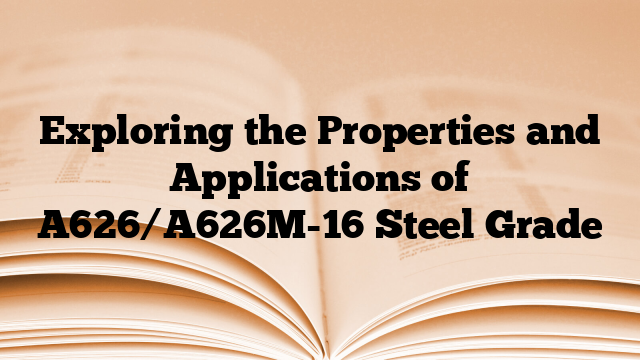The A626/A626M-16 steel grade is a standard specification for hot-rolled and cold-rolled steel sheet and strip with improved formability. This steel is produced with a low carbon content, which makes it suitable for deep drawing and bending applications.
The chemical composition of A626/A626M-16 steel grade consists of elements like carbon, manganese, phosphorus, sulfur, and aluminum. The carbon content is typically limited to 0.18%, while the manganese content ranges from 0.50% to 1.50%. Phosphorus and sulfur are present in small amounts to enhance machinability, while aluminum is added to improve the steel’s ability to resist aging and achieve a fine grain structure.
The mechanical properties of A626/A626M-16 steel grade include tensile strength, yield strength, elongation, and hardness. The typical tensile strength ranges from 310 MPa to 620 MPa, depending on the steel’s thickness. The yield strength is usually around 210 MPa, while the elongation can reach up to 40%. The steel’s hardness can be measured using various scales like Brinell, Rockwell, or Vickers.
A626/A626M-16 steel grade is commonly used in industries such as automotive manufacturing, appliance production, and construction. It is often utilized for components that require excellent formability, such as automotive body panels, household appliances, and metal furniture. The steel’s low carbon content and improved formability make it suitable for deep drawing, where complex shapes are created from flat sheets.
In summary, A626/A626M-16 steel grade is a versatile material with a focus on improved formability. Its chemical composition and mechanical properties allow it to be used in a wide range of applications where deep drawing and bending are required.

